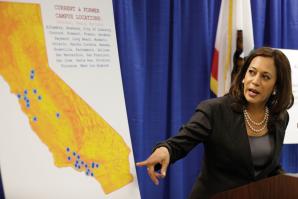The state of public education is never far from my mind.
Like most of you, I have been dismayed by our state’s declining support for public education. As support has waned, so has California’s educational ranking: We are now near the bottom on measures such as student/teacher ratios and per-pupil spending.
As a parent and citizen, I see a clear connection between our children’s education and our economic and civic well-being. As business people, we all have seen the impacts of budget cuts, declining schools and students who lack skills and motivation. We see them every time we try to hire an entry-level employee.
So I am encouraged by the governor’s latest budget, which begins to reinvest in public education and, most importantly, shifts a great deal of spending control to local districts. That is a welcome change from the top-down requirements of both the state and federal governments over the past decade.
Now, districts can decide what their students need most, whether it’s an expanded curriculum, a library, new learning tools or additional teachers. It won’t be enough to make up for all the years of cuts, but it is a good start.
As we rebuild our schools, let’s not lose sight of rebuilding our teachers as well. They are absolutely critical to the success of students. Time and time again, research shows that the quality of a child’s teacher is second only to his or her home environment as a predictor of learning.
The news about public school teachers is often negative, as in a recent and controversial report asserting that few of California’s teacher-training institutions are doing the job they should be doing. The result: mediocre teachers ill-equipped to educate students. Some educational leaders dispute both the findings and the methods used to gather data.
Of course, our teacher training institutions — and our teachers themselves — could improve. International comparisons indicate that other countries (Finland and Singapore, for example) do a much better job of training, supporting and paying teachers. The not-surprising result is higher student performance.
But let’s not forget that in the past decade or so, while budgets were being cut right and left and overly rigid government rules descended upon classrooms, many dedicated teachers stayed the course, focusing on students and their learning needs, even to the point of paying for their own classroom supplies.
In that same period, our state and federal governments increasingly treated teachers like hired hands: reducing classroom time, insisting on adherence to rigid standards, eliminating time and dollars for professional development and collaboration. We don’t ask any other trained professional — a doctor, engineer or lawyer, for example — to operate under such difficult conditions.
Like other professionals, teachers need to show positive outcomes. But if you’ve ever dealt with children, you know that encouraging learning and performance is not cut and dried, nor can the evaluation of teachers be.
As we finally begin to reinvest in our public schools, let’s reinvest in our teachers as well by giving them good training, fair-minded and collaborative evaluation and continuous improvement opportunities. Without respected, motivated and well-trained teachers, we will never have public schools that foster true learning, children who develop a love of learning or communities that prosper.




